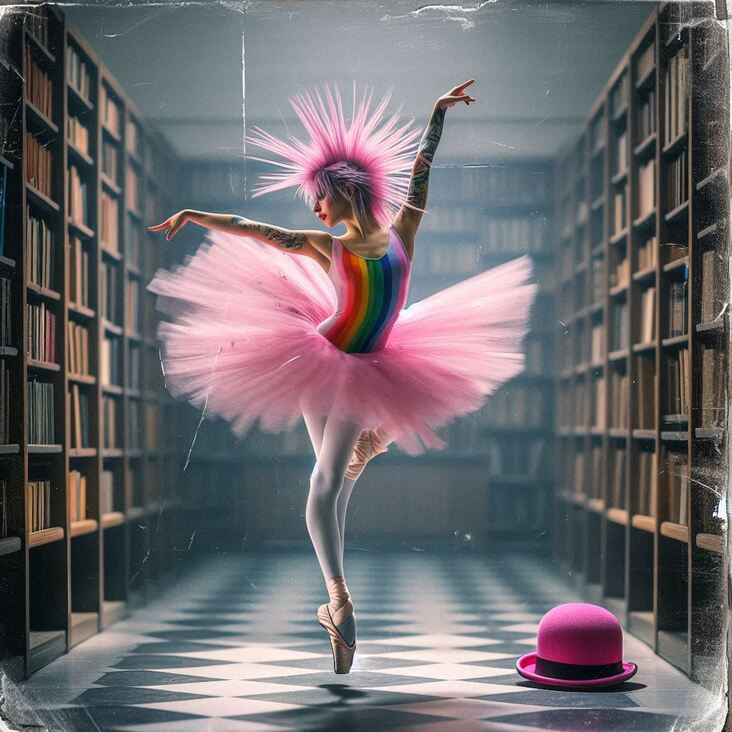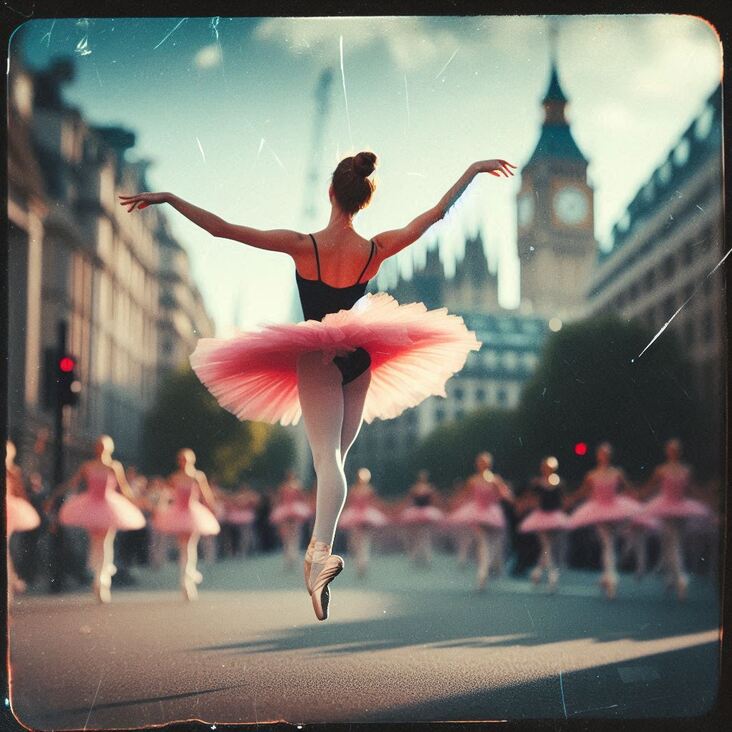
Hello darlings! Emma here, your friendly neighbourhood tutu enthusiast, bringing you another installment of #TutuTuesday, straight from the heart of Paris, where the air practically vibrates with the energy of dance! I simply cannot resist the allure of this city, the city of love, of art, and of course, ballet!
Now, I know what you're thinking: August 7th, 2001? Doesn't that feel like just yesterday? Well, not quite! This week I've taken a little time travelling trip – nothing too fancy, just a quick hop, skip, and twirl to the early 2000s. I mean, come on, what's a fashion-forward ballerina to do when the summer heat starts creeping in and even the thought of tights is enough to send one sweating?
You know what? Even back then, the beauty of ballet was in full swing. Today I'm going to take us on a tour of the tutu scene in this particular time, delving into the fascinating evolution of the very symbol of grace and elegance that is the ballet tutu.
From The Courts to The Stage
The story of the tutu isn’t a short one! In the beginning, what we now know as a tutu was simply a short skirt, or pagne, used in French and Italian courts for the performances of courtiers. Over the years, the “pagne” transitioned into a longer, draped skirt with an emphasis on billowing fabric and a greater sense of theatricality, and became known as a “tutu”. The real turning point for the tutu came in the 1800s. Imagine Marie Taglioni, her exquisite pointe shoes tiptoeing across the stage in a wispy, delicate tutu while she performed “La Sylphide”, creating the world of fantasy and movement that would inspire generations to come. Talk about a fashion statement! That era saw the development of the romantic tutu, a beautiful silhouette of lightweight, flowing layers that emphasised ethereal beauty. Think airy gauze, flowing tulle – perfect for twirls and graceful leaps!
A Dance Through Time:
Fast forward a little bit, into the 1840s, and the romantic tutu was joined by a more streamlined version called the classical tutu. With its more structured lines, this tutu gave way to a sharper focus on athleticism and precise movement, a powerful expression of a more mature, modern vision of dance. I simply adore the iconic look of the classic tutu! Its shape is almost a masterpiece, isn't it? It embodies precision and power without losing that innate elegance. And that detail of layers upon layers of tulle… Pure magic, my darlings!
Back to 2001, My Delights!
The year 2001 wasn't all about retro tutus. A new era had blossomed! Contemporary dance embraced its unique freedom in fashion too, with the emergence of a completely different take on the tutu. Now, you had to be ready for tutus in all sorts of creative designs! Remember when designers embraced unconventional materials like leather, chiffon, and even denim? These revolutionary materials, used to craft the modern tutu, created a new spectrum of colour and texture. Think of tutus in bold and exciting hues that could match a contemporary ballerina's expressiveness on stage! It was simply phenomenal.
The Evolution Never Stops:
To me, the evolution of the tutu tells a compelling story, mirroring society's changing views on femininity, body image, and performance itself. Each tutu represents a moment in time, an aesthetic that is intrinsically connected to the way we dance. In 2001, dance became more bold, expressing individual styles through choreography and outfits. You couldn’t escape the influence of contemporary ballet!
I mean, it wasn't all tutus all the time, darling! The dance scene in 2001 was a fascinating mix of classics, reimaginings, and ground-breaking experimentation. On that particular August 7th, you might have found yourself whisked away to the breathtaking Royal Ballet's "Swan Lake" at the Royal Opera House. A night of captivating performances! Oh, the grand tutus and those elegant swan costumes, with the captivating use of white. This truly embodies the magic of the classical tutu. Alternatively, perhaps you'd find yourself drawn to the raw emotion and fearless expression of a modern dance piece, maybe “Rite of Spring” by the Nederlands Dans Theater. Both were absolutely exhilarating, captivating performances with a focus on different aspects of the tutu! I wouldn't miss these for the world.
Don't Forget To Dance!
And while we are in this enchanting Parisian haven of culture, remember to embrace your inner ballerina! The City of Lights, it truly is. Why don't we go exploring? Le Bon Marché beckons with its glorious department store filled with delectable fabrics and inspiring styles, perfect for finding the ideal pink tutu, naturally! Or, if you're a bit more adventurous, take a stroll to the Place de la Concorde, with its majestic fountains and endless avenues lined with Parisian glamour – the perfect spot to enjoy the artistry and joy of dancing!
Until next week, remember to twirl with joy, explore the world of ballet, and always…always wear pink! And oh, before I forget, I’m hosting a very special “Tutu Tuesday” event in Derbyshire, where it all began, this very weekend! I’d love for you to join me for a spot of ballet fun, shopping, and of course, all things pink tutu!
Until then, keep the tutu dreams alive and twirl beautifully!
P.S. Have you noticed a pattern here? My travels tend to involve a lot of trains! Yes, darling, there is nothing more delightful than travelling to beautiful cities like Paris in the romantic elegance of a train carriage, complete with perfectly flowing tutu, of course. And let me tell you, it is such a delight! I will tell you all about it in my next #TutuTuesday post!

